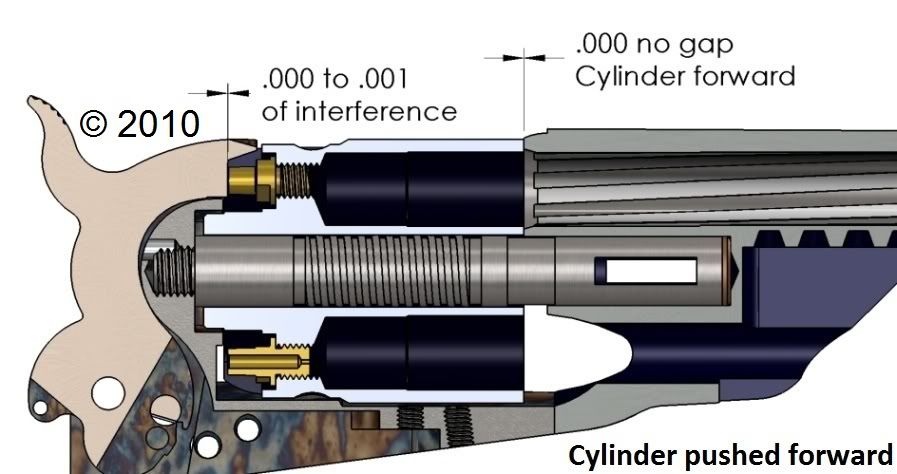The first thing that shooters have to realize about unmodified Colt and Remington pattern cap pistols is that the cylinder gap is relatively uncontrolled as compared to modern revolvers or the Colt revolvers after 1871. I am speaking in generalities because there were some designs that addressed this situation, but that is not the subject of this discourse. The advent of the “gas ring” (gas shield) at the front of the cylinder changed the nature of head spacing and cylinder gap. Before this device the end shake of the cylinder literally allowed the gap to change from zero to whatever we normally describe as the working cylinder gap.
You will see some of our board members like Flint and Pettifoger modifying cap pistols with the addition of a gas ring , if you pursue those modifications the following techniques should apply, but they need to be reviewed accordingly.
Note that there is basically no difference in the way you set up any of the Colt's pattern cap guns. In fact the Army and Navy models share a common frame geometry. There are differences, but the primary difference is the relief cut on the Army frame to facilitate the larger diameter forward portion of the cylinder. The cylinder lengths change, but the relationships between the relevant components remains the same. So anything from a Paterson to an 1862 reproduction can apply these concepts. The same is true with the Remington reproductions, it is the relative positions of each of the components that determines the viability of the set up.
I personally run my cap guns with .008” to .009” of cylinder gap when the cylinder is pushed to the rear. I run my cartridge guns closer. Others may have valid arguments for running them at some other number, but I find .008” works very well on a Colt’s pattern pistol. I have less experience with Remington pattern pistols, but run them at .008” as well.
In this post I will illustrate the cones, cylinders, hammers and the barrel face to acquaint everyone with my terminology, the relative positions and the dimensions I will be speaking about. In following posts I will expand on the explanations and later address how to get your pistol properly set up as shown.
The first two images below show the relative positions of the cones, cylinder, hammer face and the barrel face. Note I am using Treso cones for my illustrations. You can accomplish the same relationships with original or other aftermarket cones, but I find Treso cones to be extremely uniform and durable as well as aiding in the attenuation of back blast through the flash hole. The Aluminum Bronze alloy is that Treso manufactures their cones from is one of the best if not the best choice possible for a wear resistant, flash hole erosion resisting, corrosion resistant material available. As the measurement from 2 pairs of heavily used competition pistols attest, the cones hold their dimensions and form over the long haul. The cones on my pistols are frequently removed and rigorously cleaned with little change dimensionally.


~Mako